Some posts only go to subscribers via email. EXCLUSIVELY.
You can read more here or simply subscribe:
How Web Publishers Can Use ChatGPT’s Code Interpreter
This post is about a particular use of ChatGPT that is only available to people with a paid account there.
If you don’t have one yet, this post may convince you to get a paid subscription. It’s easy to do – just visit their new domain: ChatGPT.com.
I have three ChatGPT paid subscriptions at home (the kids share one between them). We also have four paid accounts for the business.
Personally, I’m amazed that one of the most advanced AI models in the world – if not the most advanced – is available to the public for as little as $20 a month.
What’s even more amazing is that not everyone is taking advantage of that.
I’m a huge AI fan, in case this wasn’t clear by now. I use it all the time and for pretty much everything.
Another “power user” is Connor, aka Sathoro on the Fat Stacks forums. When he came up with Koala AI, I was happy to be one of the first testers and reviewers.
Like me, Connor uses AI tools for doing much more than creating articles. When he shared this insightful post on the forums, I asked for his permission to repost it on Yeys.
The Code Interpreter Post
Actually, OpenAI recently changed Code Interpreter’s title. It’s now known as “Advanced Data Analysis”—a much more fitting name, as you’ll see from Connor’s post.
However, we’ll use Code Interpreter in this email because, well, that’s what Connor used in his post, and that’s how most people call it.
It’s available in the same location as one of the three options when using GPT-4.
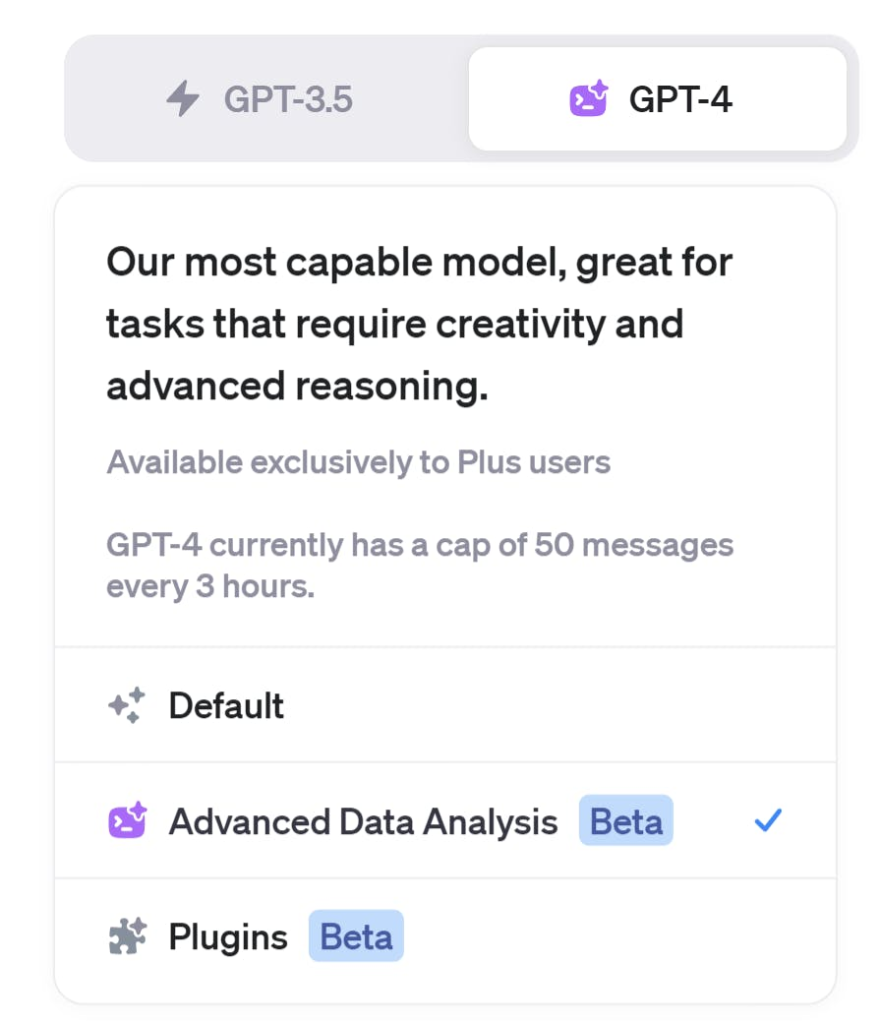
As Connor explains, Code Interpreter allows ChatGPT to write and execute Python code. This enables the AI to perform complex computations and data analysis that go beyond its core language generation capabilities.
While Code Interpreter doesn’t let you circumvent ChatGPT’s hard token limits, it opens up new possibilities by letting ChatGPT process and analyze large datasets you provide as input. Connor demonstrates this nicely in his backlink analysis example.
Before we get to Connor’s insightful post, I want to give credit to the Fat Stacks forums where he originally shared this. For those unfamiliar, the Fat Stacks forums are an invaluable online community for web publishers and entrepreneurs. Jon Dykstra launched them as part of his Fat Stacks course.
What makes the Fat Stacks forums so special is the willingness of members to share detailed insights and strategies, made possible by the private nature of the community. You can only gain access by signing up for Jon’s courses, which I highly recommend if you’re serious about web publishing. Registration is typically closed, but you can join the waiting list to be notified when spots open up.
The tips and camaraderie in the Fat Stacks forums are unparalleled. I’m grateful to Connor (known as Sathoro on the forums) for allowing me to republish his post here. Connor is also the talented creator of Koala AI, a tool we rely on daily for content creation. You can read my complete Koala AI review here.
Handing Mic Over to Connor
And now, without further ado, here is Connor’s excellent overview of ChatGPT’s new Code Interpreter capability:
ChatGPT Code Interpreter is a really useful tool and I want to make a quick post about it.
First, I’ll show some screenshots of how I recently used it to create a disavow file from ~60,000 backlinks, then I’ll quickly talk about what it is, clear up a misconception, and then I’ll talk about when you should use it.
Background: ChatGPT Code Interpreter is accessed by having access to ChatGPT Plus and choosing Code Interpreter when hovering over the GPT-4 selector.

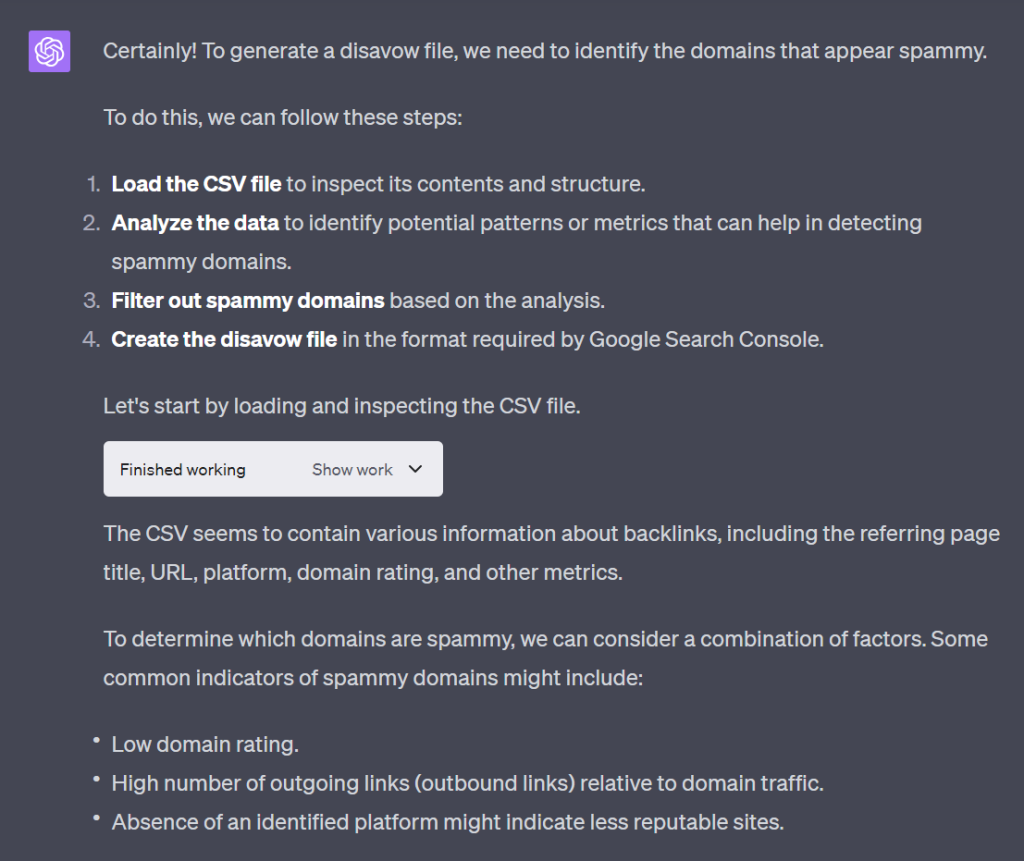

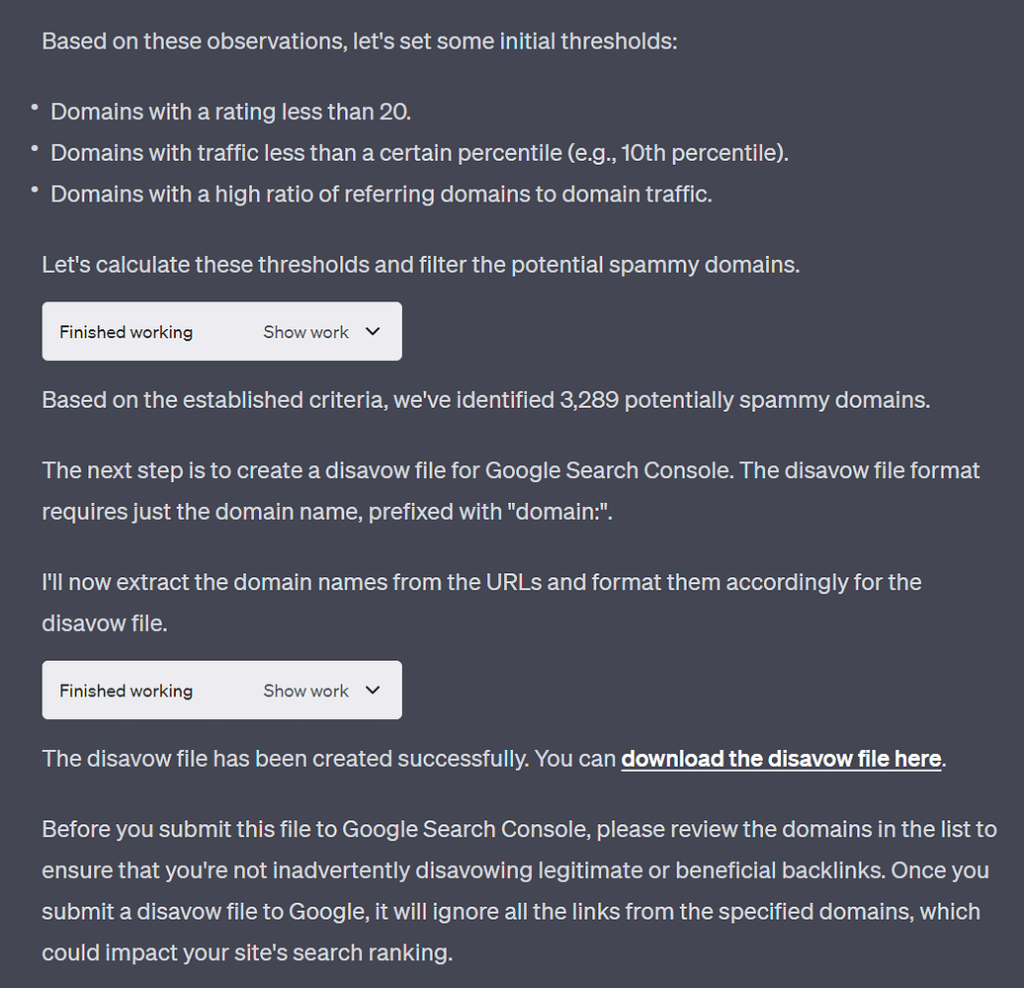
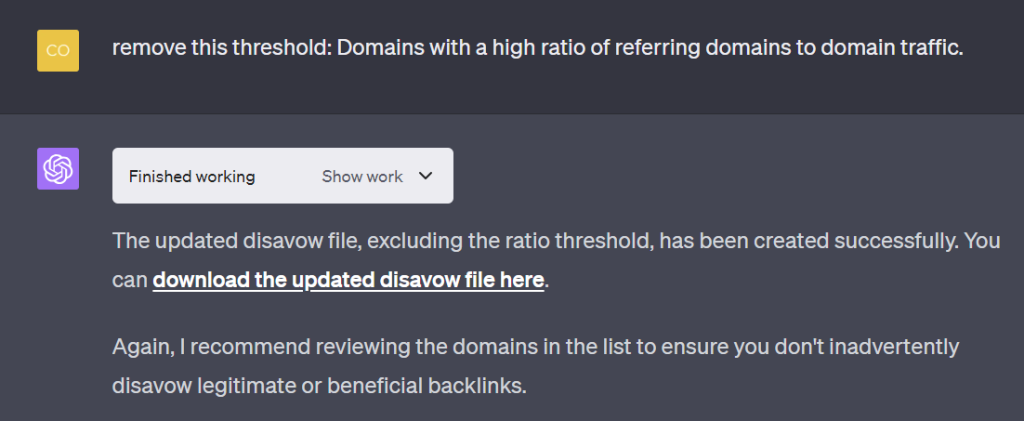
What It Is
First, Code Interpreter uses GPT-4 to actually write Python code that is then executed on a server and the output/result of the code is then fed back to ChatGPT. That allows ChatGPT to use the result to craft its response or to return it back to the user directly. This is incredibly powerful because it means it can do things language models aren’t meant to do like perform math, filter and run computations on large amounts of data, and create graphs.
Remember, language models are meant to generate text; they are not calculators. So the fact they can now write code to work as a calculator (or whatever you need it to be) is pretty amazing.
Here is a very simple example where it performs some math by creating code to do the math and executing that code:
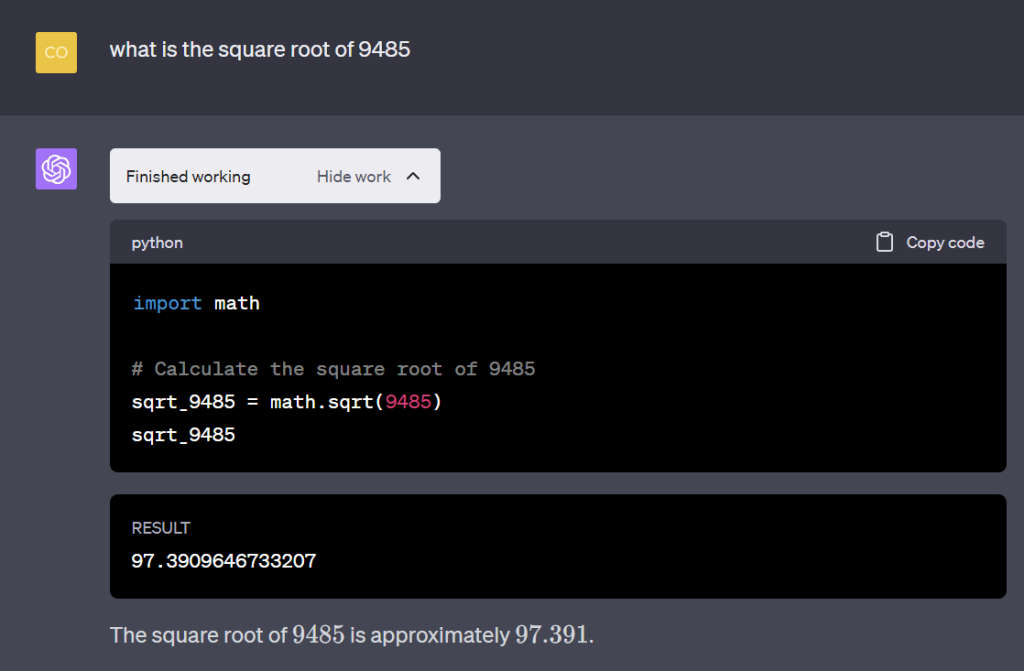
Misconception
The main misconception is that Code Interpreter allows you to get around the prompt limit length in ChatGPT. This is false. I’ve seen people tell others to simply upload a text file into Code Interpreter to get around the limits, but this won’t actually do what you think it will…
There are hardcoded token limits in the language models and using Code Interpreter doesn’t get around that. However, what it does allow for is analyzing data that doesn’t fit in the prompt limit. This is simply because the data is not even being fed into the language model. Instead, the language model is creating code, and then the data is being fed as input into that code which is executed outside of the context of the language model.
If you feed it a CSV file and you ask it to do some analysis, what it will typically do is read the first few lines of the CSV to understand it, then generate code, then execute that code against the whole file.
If you give it a text file, it will similarly just read part of that text file to understand it. It won’t read the whole file and magically get around the prompt limit.
When To Use It
Now for when to use it. Basically, for tasks where you would typically be using Excel or Google Sheets or maybe writing some Python code to analyze some data, then Code Interpreter could make your job easier. Of course, it can go far beyond this (even doing audio and image processing) but this is a good place to start.
I’ve used it to analyze payment data to quickly create graphs and tables of payment volume by different attributes like country.
I’ve also used it to upload a CSV file of 60k backlinks and then asked it to generate a disavow file of the spammy domains. Code Interpreter analyzed the CSV file, came up with a good way to determine which domains might be spammy, and then generated the disavow file. I was able to easily ask it to make a tweak to how it chose the spammy domains and then it updated the code and generated a new disavow file.
Final Words
It’s me Anne here again! *Waving*
Connor’s post clearly illustrates the power of ChatGPT’s Code Interpreter for tackling data analysis and manipulation challenges. While the tool has limitations, it opens up new possibilities for automating complex tasks that previously required custom programming or spreadsheets.
I will say that while I’ve used Code Interpreter successfully, I’ve also had less-than-stellar results when I tried to use it to find similar topics in our content plans. In fact, I’ll be mentioning that in my up-and-coming Niche Site Summit talk.
Reminder:
Niche Site Summit is taking place virtually on October 24 & 25. That’s where 22 experienced publishers (including yours truly) will be sharing niche site advice. The best part? It’s FREE!
Thanks again to Connor for allowing me to share his insights, and as always, leave me a comment to let me know more about your own experience with Code Interpreter. I’d love to hear more about applications for web publishers!
